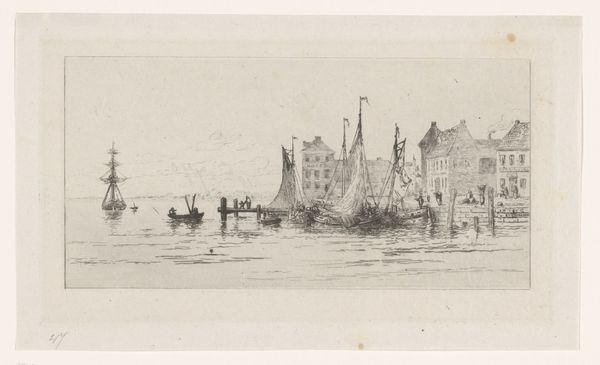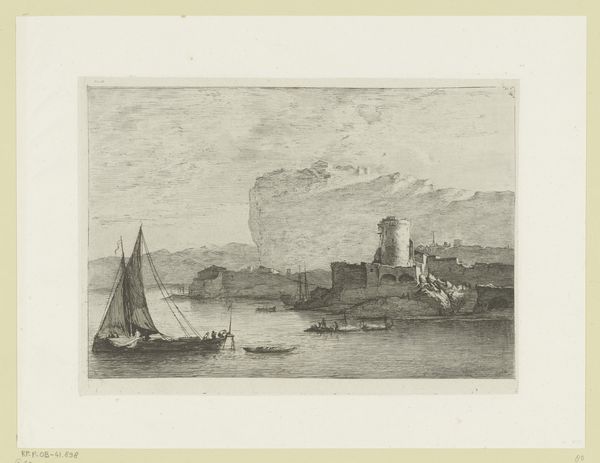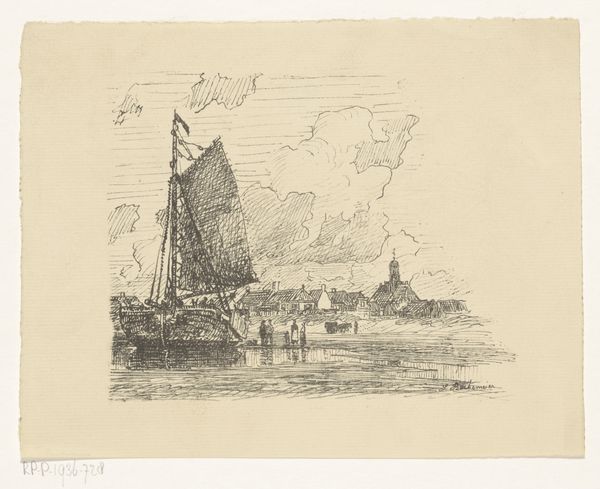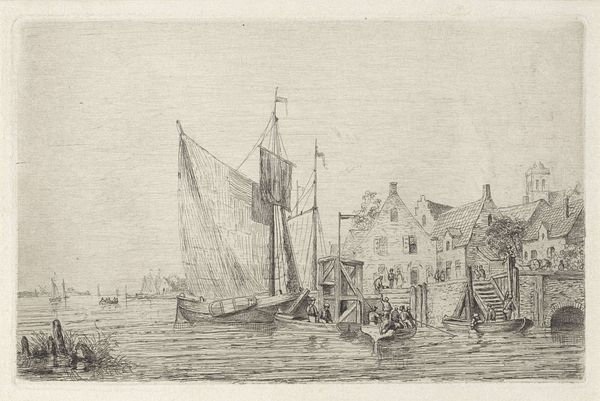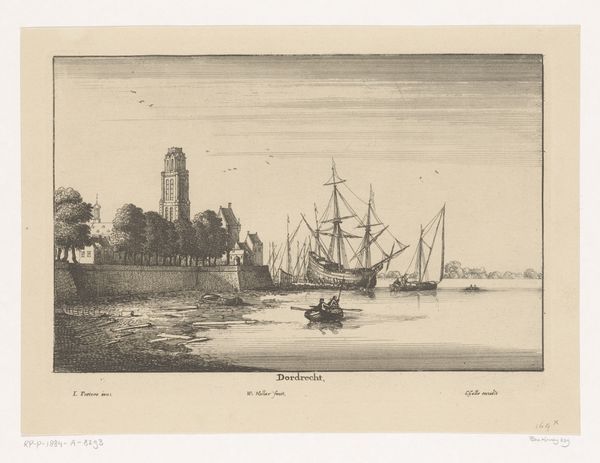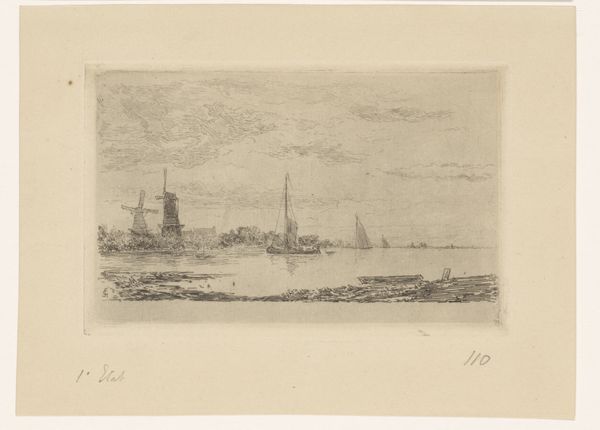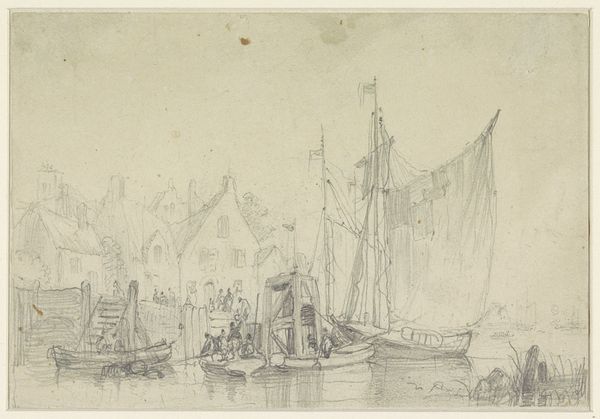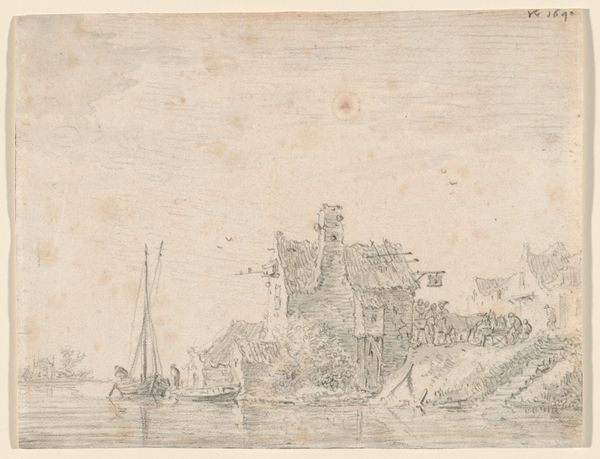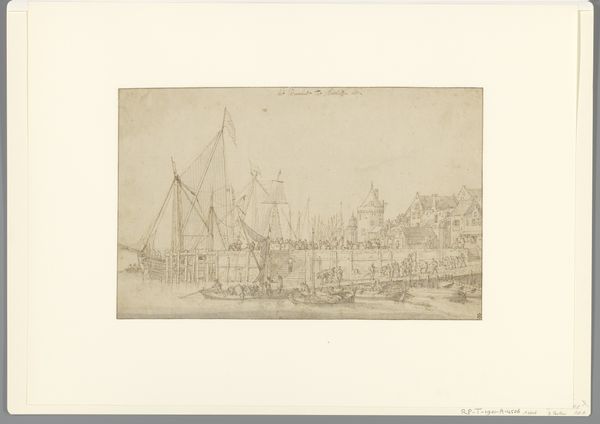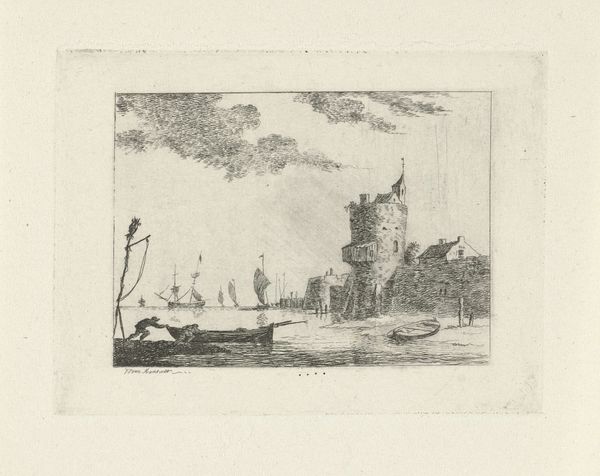
print, etching
# print
#
etching
#
landscape
#
etching
#
cityscape
Dimensions: height 178 mm, width 245 mm
Copyright: Rijks Museum: Open Domain
Curator: Welcome. Before us hangs an etching by Vicomte Arthur-Jean Le Bailly d'Inghuem entitled "Haven van La Goulette," dating to 1875. Editor: My first impression is one of muted tension. There's a sense of activity in the harbor with those ships, but the imposing stone wall and cannons give it a slightly forbidding quality. Curator: Precisely. D'Inghuem, employing an etching technique, draws attention to the very physicality of this port city. Consider the marks making up the formidable walls of the port, each deeply etched, laboriously placed. It speaks of construction, of the materials themselves—the weight and permanence intended in their arrangement. Editor: Yes, and I’m also thinking about what that constructed permanence *means*. La Goulette was a strategically vital port for Tunis. This etching, made during a period of increasing European colonial interest in North Africa, represents a site of both commerce and potential conflict, a place where power is materially manifested through architecture and military infrastructure. Curator: A place whose resources become central to global trading systems. His process highlights that such infrastructure is the result of significant, deliberate, and visible effort. This isn’t just a picturesque view; the work reveals, step-by-step, the harbor's very manufacture, and its place within trade routes of raw and manufactured goods. Editor: Absolutely, we need to view this landscape as an active participant in those global political and economic networks, not as a neutral backdrop. The figures along the top, standing guard, only reinforce the idea that this place needs defending. This print subtly underlines power structures already in play. Curator: Notice, too, how the detailed rendering of the stone and the vessels contrasts with the relative blankness of the sky, emphasizing the physical and the made rather than the atmospheric and the ephemeral. D'Inghuem draws our eye not to some romantic ideal of nature but to human labor imposing its will upon the landscape. Editor: The harbor becomes almost like a character here; and thinking about that defensive wall again, it represents who is kept out, who is defended within. This simple, stark portrayal, with just the lines defining space and substance, delivers such complexity when you see this moment within Tunisia’s timeline. Curator: Indeed. Looking at "Haven van La Goulette" has certainly sharpened our vision. Editor: I’m leaving here thinking about how art marks not only the "what" but also the "how" and "why" of human action on this earth.
Comments
No comments
Be the first to comment and join the conversation on the ultimate creative platform.
